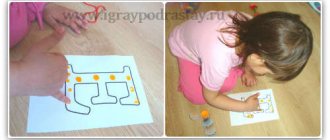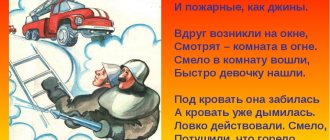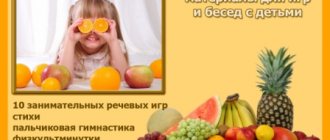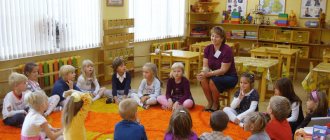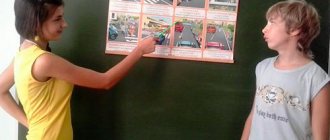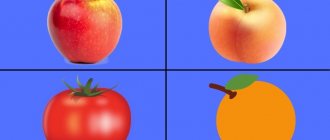Conversation is the most important method of working with children
There are two ways to provide useful information, instill good habits, and give children the skills to do something: talk to kids about pressing topics and set a personal example. If we talk about ecology, then the education of a responsible citizen begins with our personal example and well-constructed conversations filled with emotional examples.
In kindergarten, we “talk” with children all the time, but we don’t limit ourselves to moralizing, but try to make the conversation interesting, instructive and productive. It is clear that garbage is not the only topic of conversation within environmental education. Below I will provide a list of sample topics for all ages.
It is worth saying that the conversation itself is rarely used as an independent method, but it is an obligatory component of any educational moment in a preschool educational institution. Thus, we distinguish between introductory conversations that organize children to perform one or another type of activity, accompanying conversations during a process or activity, and final or clarifying conversations. In addition, a distinction is made between cognitive and ethical conversations.
Therefore, the list of topics about ecology from the card index, which I will give below, can be used not only as part of thematic classes on environmental education, a month or week of ecology, but also during walks, when we observe nature, during organizational moments and on special occasions. , if an incident occurs that can be resolved through conversation, for example, a child picked flowers or broke a branch of a tree.
I will also add regarding conversation as the main, in my opinion, method of the educational process, that it is important to understand the power that the human word has. It wounds and heals, lifts you from your knees and kills. Remember that children absorb literally every statement you make and clearly understand the difference between what you say and how you act in real life. If you throw cigarette butts and pieces of paper on the sidewalk, there’s no point in moralizing about ethical issues...
List of topics for conversations within environmental education
So, I give a list of topics, and remember that it is suitable for any age, but, naturally, the information content must strictly correspond to the age of the child. What is clear to the preparatory group will be absolutely incomprehensible to the kids. Next, I will roughly describe what a card from an ecology card index looks like. And, of course, I’ll give you a tip on a good thematic guide: “Conversations based on pictures “Lessons of Ecology.” Demonstration material. (16 pictures + 8 diagrams).”
Topics of conversation on ecology:
- People are friends of nature;
- You need to be able to feel sorry;
- Amazing all around;
- Forest: love, protect and not be afraid;
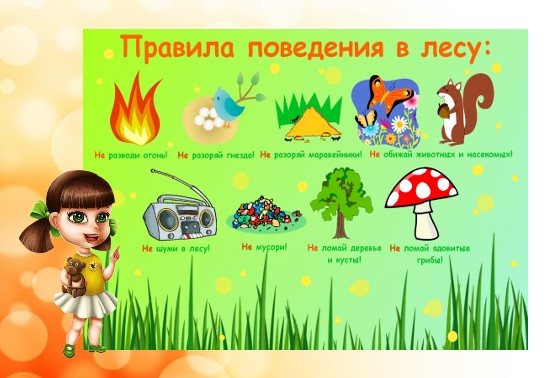
- Secrets of plants;
- Birds and animals in winter;
- Pharmacy in the meadow;
- Do animals have houses?
- How can we help nature;
- All living things are under our protection;
- Insects are part of nature;
- Garbage is a disease of the planet;
- Don't pollute nature!
- Kindness must be learned;
- Our home is nature;
- Our helpers are birds;
- Nature in art;
- Fire: friend or foe?
As you noticed, the names of the topics are universal, they are suitable for classes on ecology in the second junior group, and 1st grade will also find something to talk about.
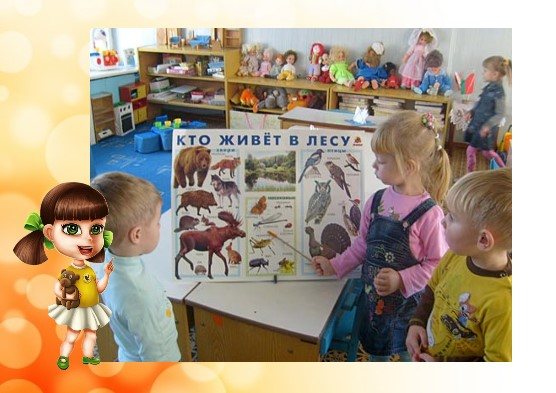
Ecological conversations with preschool children
Ecological conversations with preschool children
Currently, due to the deterioration of the environment, there is a need to increase environmental awareness of every person, regardless of age. In this regard, the country is actively creating a system of continuous environmental education for the population. The initial link of this system is a preschool institution, where the foundations of environmental knowledge are laid. Teachers resort to various means, forms and methods with which they can effectively solve the problems of environmental education.
Conversation is one of the important forms of activity of the teacher and students, as it represents great opportunities for the environmental education of preschoolers. A conversation brings the child closer to the teacher, makes it possible to unobtrusively and imperceptibly exert an educational influence: after all, education, as V.A. noted. Sukhomlinsky, this is “constant spiritual communication between teacher and child.” Conversation is widely used in any type of activity of the teacher and children. To carry it out, you can use a whole range of methods and techniques: games, dramatization, discussion of situations, excerpts from the works of writers, folklore materials, music, reproductions of paintings. All this contributes not only to the formation of environmental knowledge, but also to the formation of a personal position, the education of emotions and feelings.
Environmental conversations should be held throughout the year. So, in the fall, we talk with children on the topics: “Why trees undress in the fall”, “Is autumn good or bad”, “Why do animals change their coats”, “How do plants live in winter”, “How do animals prepare for winter”. We use active and didactic games: “The Kite and the Hen”, “Run to the Named Tree”, “What Has Changed?”, “Find a Pair”, “Whose House?” and etc.
In the book corner we display scientific and fiction literature for children. We introduce preschoolers to fiction, according to the long-term environmental plan. Parents are also involved in preparing for the upcoming conversation. To do this, in the “Parents Corner” or in a group chat we post a list of literature for home reading with children, recommendations and articles on the topic of conversation and issues of environmental education for preschoolers. Children and parents begin to prepare for the conversation “Feed the birds in winter” in advance: we collect seeds and fruits of plants and create a pantry for winter feeding of birds, which is a real manifestation of care and kindness towards the inhabitants of nature. We conduct a conversation on this topic in December, when winter comes into its own. Children already know that birds that can find food for themselves in the harsh season remain in our area for the winter.
This knowledge is confirmed by observations of sparrows, crows, tits, bullfinches and waxwings on excursions and walks. It turns out how many birds can be seen in nature now? Why did insectivorous and waterfowl fly to warm countries? What do birds eat in winter? What foods do different birds like? We inform you that sparrows love the seeds of herbaceous plants, bullfinches love the seeds of rowan, birch, lilac, and crows and magpies love various refuse. We say that in winter, birds are less picky about food, so some food from our table is suitable for feeding birds. So what should you feed? Tits prefer pieces of unsalted lard and meat, crumbs of white bread, sparrows prefer cereals, seeds, bread crumbs, bullfinches prefer watermelon, pumpkin and sunflower seeds. Let's get acquainted with the rules of feeding birds.
At the end of the conversation, we make a decision with the children: together with their parents, make and hang feeders on the territory of the kindergarten and in the courtyards of their houses. Feeders are usually made from waste material. In conversation we use poems that touch the child’s soul and find an emotional response in his soul. As well as riddles that enliven the conversation, maintain the interest of students, activate cognitive activity, and develop the ability to observe and understand nature.
Conversation “What have you seen unusual in nature?” We carry out in autumn, and winter, and spring, and summer. Nature is an inexhaustible source of beauty, secrets and mysteries. Often children in older preschool age lose interest in their immediate natural environment, believing that they will not see anything interesting near them. And talking about the amazing helps them discover new secrets, see the beauty in an ordinary and familiar snowflake, icicle, or snow-covered tree crown. Of course, it is easier to have such a conversation in spring and summer, when the green leaves of trees and bushes are blooming, when bird voices are heard everywhere, when the beauty of nature - its sounds, colors - does not leave anyone indifferent. It is more difficult to do this in winter, when there are few objects for children to observe, but it is easier to pay attention to their shapes, lines and colors - against the backdrop of snow-white snow.
In preparation for the winter environmental conversation, we use the possibilities of excursions and walks to the forest park, to the vegetable garden (located on the territory of the children's institution). We draw children's attention to dry tall stems rising above the snow cover, the shape and color of clouds in the sky, shadows in the snow, crowns of bushes and trees, snowdrifts, the color of birds, etc. Together with the children, we collect winter bouquets of dry herbs, which we place in a group. They are no worse than bouquets of flowering herbs in summer. During a snowfall, we make riddles about snowflakes, and look at the falling snowflakes against the bright background of children's clothes - we are surprised at their diversity.
Thus, we are gradually preparing the environment for discoveries of the unusual in the ordinary. And works of folklore, in particular, riddles, proverbs, and signs that tell about a natural object or phenomenon in an allegorical form, help children to discover them in many ways. Here, for example, are the signs we introduce children to in the winter:
The pigeons cooed - the weather will be good.
The cat curled up in a ball - in the cold.
Crows fly and circle - it means frost.
The natural world is fraught with many beautiful and amazing things for the perception and knowledge of a small person. And environmental conversation creates a certain mood in the children for their discoveries and research. We choose topics for conversations and problems so that they arouse interest among children. They awakened the desire to discover and study their natural environment, to observe various phenomena, patterns and connections in it. And this is a condition for children to become good stewards of their land in the future, taking into account knowledge of environmental relationships in their activities and behavior.
Literature:
1. A.I. Ivanova. Living ecology. – M.: Creative, 2006
2. O. A. Voronkevich. Welcome to ecology. St. Petersburg: Childhood - press, 2002
3. L. P. Simonova. Keys from nature, or ethical conversations on ecology. – M.: “Agar”, 1998.
How to design environmental conversation cards
Let’s take the topic: “Don’t pollute nature!” in the older group. We write down the topic on a card, then write down the goals of the conversation:
- Emphasize the problem of human pollution of nature;
- Explain how people pollute the environment: garbage, landfills, water and air pollution;
- Ensure that preschoolers understand the relevance of the problem;
- Together with children, determine ways to solve the problem of environmental pollution.
1. Introductory conversation about the existence of the problem of environmental pollution. Questions for children and expected answers:
— How do people pollute nature? (Garbage, exhaust gases, industrial waste);
— Where does household waste go from apartments and houses? (They take the garbage cars to the landfill);
— What happens to the garbage at the landfill? (Rots, decomposes, emits terrible odors, gathers hordes of rodents, its number is growing);
— How to reduce landfills? (Buy less unnecessary things, sort garbage, recycle paper, glass, compost food waste);
— What can be made from waste paper and glass? (New paper, glass products);
— What other types of waste are there? (Metal, construction, plastic);
- What can be done with them? (Recycle and reuse);
-What do you children throw in the trash can? (Candy wrappers, broken and old toys);
— How to reduce the amount of waste? (Donate unnecessary toys to charity, try to fix broken ones and reuse them, sort other garbage);
— Why do we need waste processing plants? (To recycle and reduce waste).
2. Demonstration of slides about products made from recycled materials.
- What can be made from ordinary garbage? (Paper products, glass, old unnecessary things can be used to make new toys, interior items, crafts and even entire houses);
3. Outdoor game “Who can collect the pieces of paper faster” and “Sorting the garbage.”
4. Drawing on the theme “Garbage and nature.”
5. Closing conversation
- What did we talk about today? (About environmental pollution, waste recycling, recycled products);
- What conclusion can be drawn? (You need to take care of nature, do not litter and try to reduce the amount of waste, give a second life to unnecessary things).
Conversation “How to behave in nature”
Conversation on the topic “How to behave in nature”
Author: Irina Evgenievna Grigorieva, additional education teacher
MBU DO "Station of Young People" in the city of Vyazma, Smolensk region.
Purpose of the conversation
: consolidate knowledge about the rules of behavior in nature.
Equipment:
cards depicting situations in nature.
Progress of the conversation:
Guys, I would like to start our conversation with these words: “Nature is the common home of plants, animals and humans, and we need to think about how this house will always prosper and grow rich.” We often go to visit nature to admire its beauty, enjoy the fresh, fragrant air, hear birds singing, and pick wild berries, mushrooms, and nuts in a basket. But we must not forget that we are guests. We are in someone else's house, which has many of its own residents and rules. What are these rules?
The teacher reads a story on this topic.
Sunday trip to the forest
At the end of the school year in mid-May, the fourth graders decided to go to the forest. Early on Sunday morning they gathered at the bus stop along with Ivanov Kolya’s parents. We boarded the bus, bought tickets and headed off into nature with the breeze. They arrived in a good mood at the outskirts of the forest. And here the question arose before them, in which direction to move next. Maybe in that corner over there, behind which the white trunks of birch trees can be seen. It must be bright and cozy there! The decision is made, and the whole company quickly walks straight through forest grasses and low forest shrubs to the chosen place.
Did the fourth graders do it right? What did the children do wrong? What is their mistake?
Listen to one expression that may tell you the mistake you made. “One person leaves a trail in the forest, a hundred people leave a path, and a thousand people leave a desert.”
Now I hope it’s clear to you what mistake the guests made? The soil layer in the forest is very thin and can easily be damaged and compacted. And at the same time, damage the roots of trees and shrubs, which suffer greatly from such invasions.
What important rule of behavior in nature can be formulated based on the example discussed?
1.Do not trample forest clearings and corners in vain, move along the paths!
The place really turned out to be wonderful. Many forest flowers grew among the white-trunked birches. They were very beautiful, you just couldn’t take your eyes off them. And the guys decided to pick bouquets for their loved ones. While collecting flowers, they noisily told each other how happy their parents would be at such a beautiful gift.
(Questions are repeated). Did the fourth graders do it right? What did the children do wrong? What is their mistake?
There are fewer and fewer beautiful flowers left in our meadows and forests due to thoughtless picking: picked flowers quickly wither and die. Many of them have become rare and are listed in the Red Book. Therefore, try to admire them in nature rather than tear them and then throw them away in armfuls on the way home.
What important rule of behavior in nature can be formulated based on the example discussed?
2. Do not pick forest and wildflowers in huge armfuls!
Satisfied with the collected bouquets, the children cheered up and began to sing songs loudly. They decided to arrange a competition between teams to see who could sing the song loudest. At the same time, they did not forget about the tape recorder. The music thundered throughout the forest. Dasha decided to praise everyone: “What a great fellow we are! We organized a real holiday in the forest!”
(Questions are repeated). Did the fourth graders do it right? What did the children do wrong? What is their mistake?
Noise, loud music, screams in the forest scare birds, animals, and insects. Cubs can lose their parents and die without them.
If you want to see a lot of interesting things in nature and hear the singing of birds, the buzzing of insects, the squeaking of a wood mouse - hide and don’t make noise, listen to the rustles and sounds. You are visiting nature, remember this!
The following rule of conduct:
3. Don't make noise in nature! Move around and relax without noise!
After the fun concert, everyone decided to wander around the forest, look around, and watch the animals. And then tell us what interesting things you saw. This is what the girls later talked about. Not far behind the bushes they found a hedgehog. He got scared and curled up into a ball. The children thought that the baby was lost, so they needed to take him with them to the city. There he will get used to them and become tame.
(Questions are repeated). Did the fourth graders do it right? What did the children do wrong? What is their mistake?
In spring and early summer there are a lot of young animals in the forest: small fluffy squirrels, gray toy hares, small hedgehogs. All these animals are at home in the forest. So when you decide to take them, you are essentially stealing them. You steal them from your home. You know nothing about their habits, about the lifestyle they lead, about their food. You usually feed animals at home with food that is not the same as what they eat in the wild, and then you wonder why these animals, despite your care, suddenly die. It is enough to admire the animals in nature and bring with you a lot of impressions of meeting them that will not be forgotten for a long time!
The following rule of conduct:
4. Don’t take animals home from the forest!
The exception is injured animals that need assistance.
And on the way of the boys a huge anthill grew. Ants were scurrying around their house. They dragged needles, blades of grass, caterpillars, and insects into the anthill. Vova said: “Ants produce acid. Would you like to taste it? There were a lot of people interested. The boys broke branches from the bush and began to pierce the anthill with them. And then they licked the sour twigs with pleasure.
(Questions are repeated). Did the fourth graders do it right? What did the children do wrong? What is their mistake?
Ants play an important role in the life of nature. They destroy a huge number of forest pests. They need to be protected and protected in every possible way. After all, there are fewer and fewer anthills in the forests. Ants die from logging, they are ruined by irresponsible people who are ready to look at how these little insects scurry around. Healers catch ants to prepare formic alcohol. Anthills and forest animals are destroyed: bears, wild boars.
The following rule of conduct:
5. Never destroy anthills! Don't bother the ants in vain!
It's time for lunch. We decided to set up a bivouac under a large tree. The boys began collecting brushwood to make a fire. They didn’t forget about the spruce branches; they picked them to make it soft and comfortable to sit on. The girls began to lay out food supplies in the forest clearing. They unwrapped the sandwiches and threw paper into the pile. Empty cans and bottles were also sent there. Soon a bright fire began to blaze. The children enjoyed frying sausages and bread over the fire. And then they ate it all with gusto.
It's time to go home. The fire was put out. The children quickly got ready and headed towards the bus stop.
(Questions are repeated). Did the fourth graders do it right? What did the children do wrong? What is their mistake?
Look what's left after a vacation in nature. The area burned out from the fire gapes like a black clearing. The fire burned the roots and branches of a nearby tree. Nearby is a mountain of dried spruce branches. There are pieces of paper, tin cans, and pieces of bread lying on the grass. The grass all around was trampled, branches of nearby trees and bushes were broken.
The following rule of conduct:
6. Know how to organize your vacation so as not to harm nature!
Guys, what other rules of behavior in nature do you know?
7.When picking mushrooms, carefully cut them with a knife!
You cannot pull out or twist the mushrooms, so as not to damage the mycelium.
You should not knock down mushrooms that are unfamiliar to you; they can be useful to animals: squirrels, moose, deer, wild boars.
8.When picking berries, pick only ripe berries!
Many people rush to collect unripe pale pink lingonberries and cranberries, for which some pickers use scoops and scrapers that collect not only the berries, but sometimes the entire plant. Collect bouquets of strawberries and blueberries. The branches wither very quickly, but in nature new ones will not grow soon, only after several decades.
So we have discussed several commandments of behavior in nature. Of course, this is only a small part of the rules of behavior in the natural environment. But these rules will also help preserve natural diversity.
The reason for many negative actions in nature is ignorance. Therefore, your first task is to study the life of nature; find out why in nature it is necessary to act this way and not otherwise; try to follow the necessary instructions and prohibitions during rest, picking mushrooms and berries.
What else should I add?
Using the same principle, you need to think through questions and answers on all topics. Within the framework of the article, I don’t see the point in writing “cheat sheets” on each topic. It’s actually not difficult, the main thing is to know what to talk about with your children. If you really don’t have time, you can buy ready-made cards.
Conversations with children of the senior and preparatory groups are carried out as a separate type of educational process and as during other types of activities.
For the younger and middle groups, it is better to talk with children during walks, art classes, etc. And be sure to use life situations to instill in children a reasonable and caring attitude towards the world around them. And let’s not forget to include parents in the work; we consult with them and talk about the same topic.
I hope my tips were useful? If so, share with those who may also find them useful, and please subscribe to the news.
Sincerely, Tatyana Sukhikh! Till tomorrow!
By the way, I recommend reading:
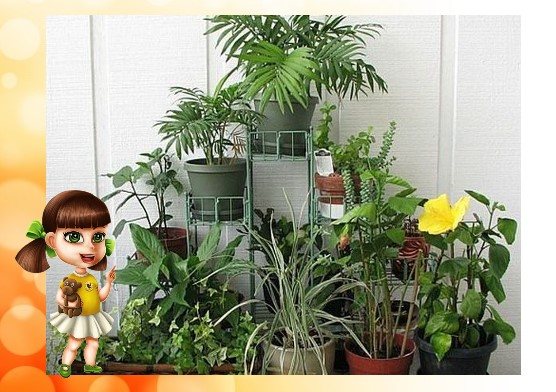
Game - conversation on environmental education for older children
Environmental education.
Game - conversation "Animal life at night and day." Author: Evdokia Ivanovna Kiseleva, teacher of MKDOU “Kindergarten No. 4”, Liski, Voronezh region Description of the material: I offer a summary of an educational game on environmental education for children of the senior group. This material will be useful to teachers of preschool institutions who work in this direction. You can organize such a game in kindergarten for parents, as part of a joint activity during the environmental campaign “Protecting the Animal World.” Goal: broadening one’s horizons and summarizing the acquired knowledge in the field of ecology. Objectives: - develop cognitive interest in nature, form a caring attitude towards it;
- consolidate children’s knowledge about the life of the animal world; — to form the foundations of ecological culture, an understanding of the value of any life; — to cultivate interest and a caring, humane and respectful attitude towards the environment. Contents of the game - conversations
Reading a poem by Y. Akim: It will happen that on a sunny day you will enter the forest through the wilderness. Sit down, try, on a stump, Don’t rush. Listen! The leaves are rustling, the grass is rustling, the birds are not silent. The spring barely gurgles in the grass, Hastening to break through to the light. The children imagine that they found themselves at the edge of the forest, in the forest kingdom, where they met the inhabitants of the forest. Educator: Who exactly can you see here during the day? (Children receive pictures of animals, sit comfortably in the “clearing” and begin to talk about animals and birds). • The bear eats berries, mushrooms, fish. Can eat any animal it catches. In the fall, it accumulates fat so that it can sleep peacefully throughout the winter.
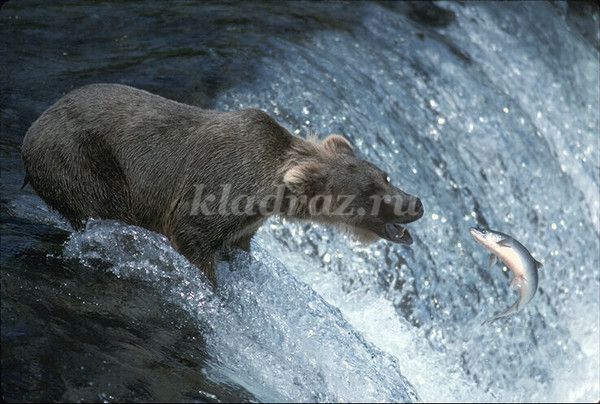
• The hare runs, looking for lush grass, tender bark, and young shoots. He hides from the fox and other predators, and if he is still tracked down, he runs away and confuses his tracks.
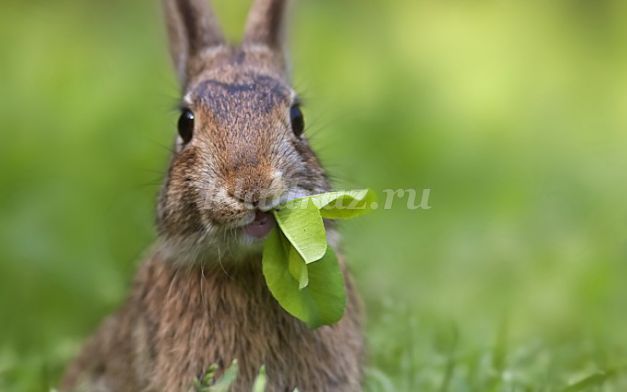
• The fox has very good hearing and sense of smell. This helps her find a mouse or a hare. And if she’s really hungry, she goes to the village and steals chickens.
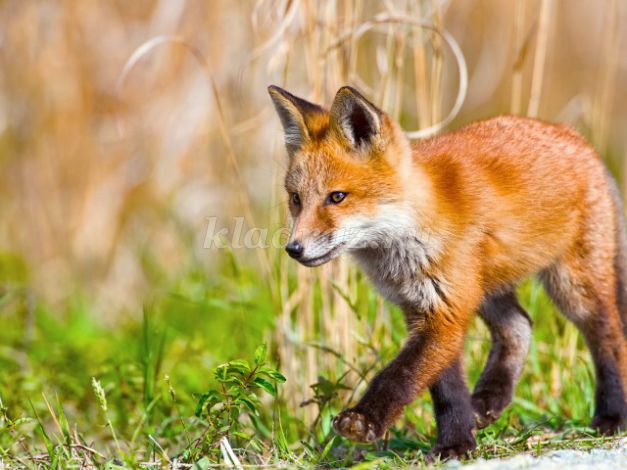
• Here is a hedgehog running, he is preparing himself a hibernation house from dry leaves. He accumulates fat, like a bear, and winter is not scary for him.
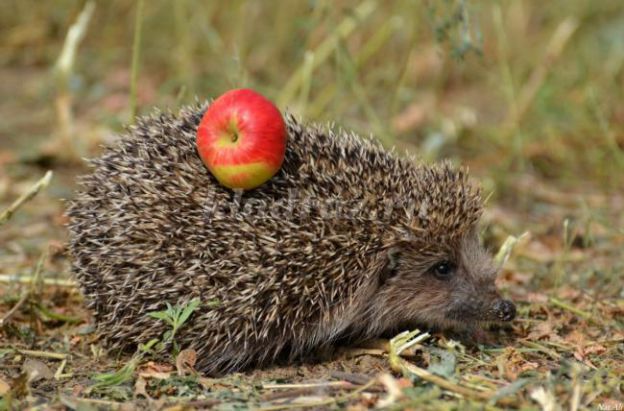
• The squirrel makes supplies: it dries mushrooms, stringing them on dry, sharp branches, and puts nuts in a hollow. She travels a lot in search of food.
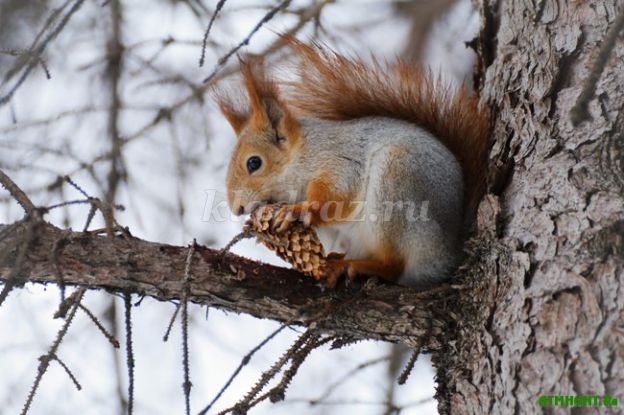
• The magpie fusses all day long, looking for food.
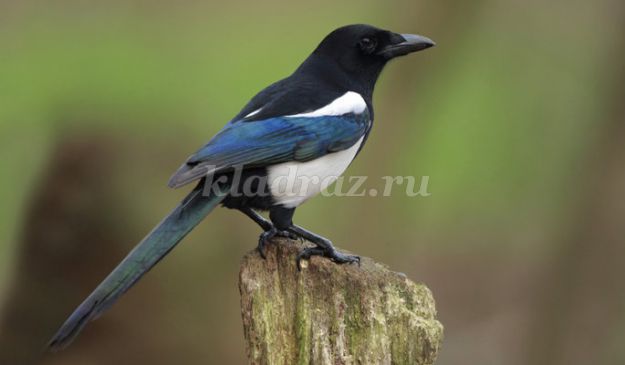
Educator: So we learned about the role of light in the life of animals. Can we live without light, without the Sun? If not, why not? Children: The sun shines, warms the whole earth, under its rays plants grow that purify the air. Educator: What happens to nature at night? Children: At night, many animals hide and sleep, but some begin nocturnal life: an owl and a bat go out hunting, wolves, lynx, and a tiger also hunt at night. - When do we sleep? - Why do you need such a rest? Children: To be healthy, vigorous, able to work. Educator: Whatever happens, we must always remember that animals and birds are part of our nature, without them the entire ecological system will be disrupted, and you and I, “Young Ecologists,” must keep order in nature and take care of the environment . The night will pass, the Sun will rise again, warm the earth with its warm rays, and we will happily say to each other and our entire planet: “Good morning!”
We recommend watching:
An ecological fairy tale about the water cycle in nature for children aged 5-7 years. Summary of a conversation with children of the older group. Topic: Energy saving Scenario for an environmental holiday in kindergarten. Senior preparatory group Ecology quiz game for kindergarten. Senior group
Similar articles:
Summary of a comprehensive lesson for children 5-6 years old on the topic “Take care of the forest”
Ecological holidays and leisure activities in preschool educational institutions. Scenarios
Ecological holiday "Earth Day" at the preschool educational institution. Senior group
Ecology classes in the senior group of kindergarten
Conversation about courage with older preschoolers
